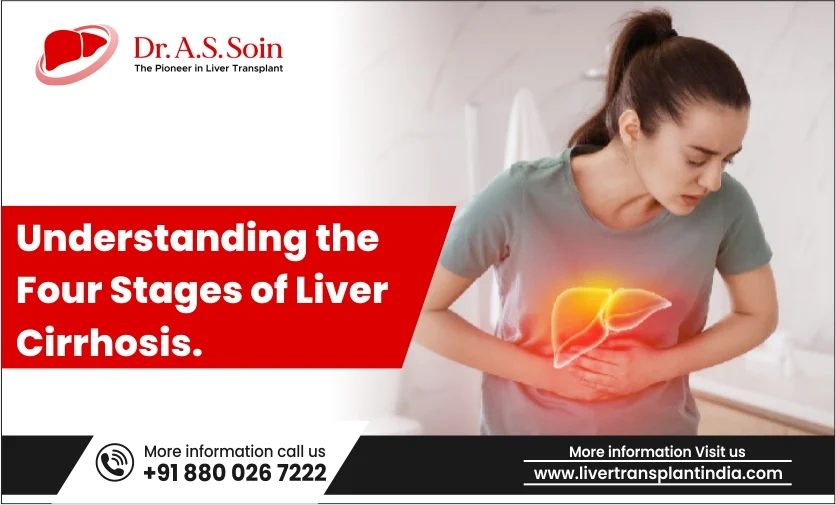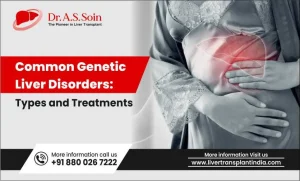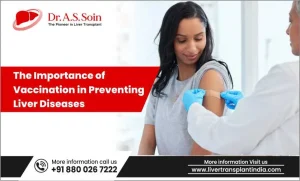Liver cirrhosis is a chronic liver disease that happens over time and gradually worsens. It’s often called “silent” because symptoms might not appear until the liver has suffered significant damage. For many people, learning about liver cirrhosis and its stages can help in managing the condition and understanding treatment options. Here, we’ll look at the four stages of liver cirrhosis, how they impact health, and what you can do to protect your liver.
Table of Contents
ToggleWhat is Liver Cirrhosis?
Cirrhosis occurs when the liver is damaged over time by toxins, diseases, or other health issues. The liver is a vital organ that filters toxins, stores nutrients and produces bile to help digest food. When the liver is damaged, scar tissue (fibrosis) forms and takes the place of healthy tissue. In cirrhosis, scar tissue eventually replaces so much healthy tissue that it disrupts liver function.
There are four stages of liver cirrhosis, ranging from mild to severe. As cirrhosis progresses, the liver’s ability to function deteriorates, leading to serious health problems. Let’s explore each stage in more detail.
Stage 1: Initial Stage of Liver Cirrhosis (Mild Fibrosis)
In the first stage, the liver is experiencing mild damage, but it can still perform its essential functions. At this point, there is only minor scarring in the liver, often called “mild fibrosis.” This scarring might not affect liver function, and many people don’t experience symptoms. For some, the only way to detect liver damage at this stage is through blood tests or imaging tests.
Symptoms at Stage 1
- Most people experience no symptoms at this stage.
- Occasionally, some may feel mild fatigue or discomfort in the upper right abdomen.
Management Tips for Stage 1
- Lifestyle changes: Reduce alcohol intake, eat a balanced diet, and maintain a healthy weight.
- Medical follow-ups: Regular check-ups can help track liver health and prevent progression.
Stage 2: Moderate Fibrosis
Stage 2 is the “moderate fibrosis” phase, where scar tissue begins to build up, making it harder for blood to flow through the liver. However, at this stage, the liver still manages to perform its functions relatively well. Symptoms are still not prominent, though some people may start to feel tired or experience slight discomfort.
Symptoms at Stage 2
- Mild fatigue
- Occasional abdominal discomfort
- Possible slight fluid retention in the legs or abdomen
Management Tips for Stage 2
- Medication: Doctors may prescribe medication to manage underlying conditions that could worsen the cirrhosis, like hepatitis.
- Diet and exercise: Avoiding alcohol and fatty foods can help reduce strain on the liver.
- Monitor symptoms: Stay vigilant for any new symptoms and keep up with regular check-ups.
Stage 3: Advanced Cirrhosis (Severe Fibrosis)
In the third stage, liver damage becomes more severe. This stage is often referred to as “advanced cirrhosis” or “severe fibrosis.” Blood flow through the liver is significantly reduced, and liver function starts to decline. At this stage, symptoms often become noticeable, and complications, such as fluid buildup (ascites), can occur.
Symptoms at Stage 3
- Persistent fatigue and weakness
- Swelling in the abdomen (ascites) and legs (edema)
- Yellowing of the skin and eyes (jaundice)
- Bruising easily and itching
Management Tips for Stage 3
- Diuretics: These medications help remove excess fluid from the body, reducing swelling.
- Low-sodium diet: Reducing salt intake can help manage fluid retention.
- Regular monitoring: Frequent check-ups become more critical to monitor liver function and catch any new complications early.
- Potential procedures: Doctors might recommend procedures to drain fluid or relieve pressure on the liver’s blood vessels.
Stage 4: End-stage cirrhosis (Liver Failure)
Stage 4, also known as end-stage liver disease (ESLD) or liver failure, is the final and most severe stage of cirrhosis. The liver is severely damaged and can no longer perform its functions effectively. People at this stage may face life-threatening complications and need immediate medical intervention. Treatment options are limited, and a liver transplant is often the only option for survival.
Symptoms at Stage 4
- Severe fatigue and weakness
- Significant swelling and ascites
- Severe jaundice
- Mental confusion or cognitive impairment (hepatic encephalopathy)
- Life-threatening complications, such as infections and internal bleeding
Management Tips for Stage 4
- Liver transplant: This is usually the best treatment option at this stage.
- Palliative care: Focuses on managing symptoms and improving quality of life if a transplant is not an option.
- Supportive treatments: Diuretics, antibiotics, and medications to manage symptoms and prevent infections.
Risk Factors for Liver Cirrhosis
Understanding risk factors is essential in preventing cirrhosis. Common causes include:
- Alcohol abuse: Long-term heavy alcohol consumption can severely damage the liver.
- Viral hepatitis: Chronic hepatitis B and C infections are the leading causes of cirrhosis worldwide.
- Non-alcoholic fatty liver disease (NAFLD): Linked to obesity and diabetes, NAFLD can lead to liver damage.
- Autoimmune liver diseases: Conditions like autoimmune hepatitis can cause the immune system to attack liver cells.
- Genetic disorders: Diseases like hemochromatosis (iron overload) and Wilson’s disease (copper overload) can cause liver damage.
Diagnosis and Treatment Options
The diagnosis of cirrhosis is often based on a combination of medical history, blood tests, imaging, and sometimes a liver biopsy. Early detection is crucial for managing the disease and slowing its progression.
Treatment Options
- Lifestyle changes: In the early stages, avoiding alcohol and maintaining a healthy weight can prevent further liver damage.
- Medications: Drugs to manage symptoms or treat underlying causes (e.g., antiviral medication for hepatitis).
- Surgery: In advanced stages, some patients might need procedures to relieve symptoms or complications.
- Liver transplant: When cirrhosis reaches an end stage, a liver transplant may be the only viable treatment.
How to Prevent Liver Cirrhosis
Prevention is always better than treatment, especially with liver cirrhosis treatment. Here are some simple lifestyle changes to help keep your liver healthy:
- Limit alcohol intake: Alcohol is a leading cause of liver damage, so it’s essential to drink responsibly.
- Vaccinate against hepatitis: Hepatitis B and C are preventable with vaccinations and other precautions.
- Eat a balanced diet: A diet rich in fruits, vegetables, lean proteins, and whole grains can help protect your liver.
- Exercise regularly: Physical activity can reduce your risk of fatty liver disease, a common cause of cirrhosis.
- Get regular check-ups: Especially if you have risk factors, regular check-ups can help catch liver issues early.
Conclusion
liver cirrhosis treatment in India is a progressive disease that can cause severe health issues if left untreated. By understanding the four stages of cirrhosis, individuals can recognize early signs, make lifestyle changes, and get medical help to slow its progression. Although cirrhosis is serious, early intervention and lifestyle changes can make a significant difference. If you’re at risk for liver disease, speak with your doctor about preventive measures and the best ways to keep your liver healthy.








